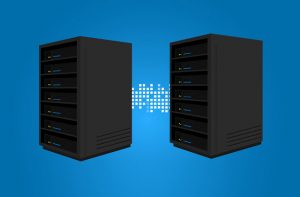What’s the Best Disaster Recovery Solution for Credit Unions?

While it’s not an actual law in a legal or scientific sense, we’ve always been a fan of Murphy’s Law. It states that if something can go wrong, it will. Unfortunately for credit unions, disaster can strike at any time, in almost any form. When it does, do you know how to handle your disaster recovery?
Credit union data is valuable. It’s also vulnerable. If something were to threaten that data, your credit union and your members would be at risk. The consequences of
Because credit union data is so sensitive, it’s important to know how to handle disaster recovery if and when it occurs.
Disaster Recovery from What?
A good disaster recovery solution needn’t be too specific about exactly which types of disasters may come. Nevertheless, it’s best to consider a wide range of potential crises. An ounce of prevention is worth a pound of cure, and so on.
If you lack the imagination for emergency scenarios, then we’re jealous of the horrors you’ve avoided so far. A lot can go wrong, and this is just a small portion of it:
- Hurricane or tropical storm
- Flood
- Tornado
- Terrorism or cyberterrorism
- Earthquake
- Wildfire
- Pandemic
- Armageddon
Any of these could significantly threaten the safety of your data, your credit union, and your members. Without a good business continuity plan and disaster recovery solution, you may be in bad shape.
(Does your credit union have a business continuity plan? You definitely need one!)
Safely Storing Data
In any worst-case scenarios, you need to have your data backed up. Keeping data backed up on an offsite
Whether it be a particularly large and far-reaching disaster, or if calamity strikes in two places at once, your credit union’s data and backup data need more redundancy. To be truly prepared for the worst, you need to have multiple data backup and recovery centers.
While multiple backups are best for disaster recovery purposes, it can be a clunky solution. Multiple backups mean several physical connections, routers, and sets of equipment for each backup. Additionally, you need to keep track of where all the data is stored, on which site, with which company. The redundancy adds up in cost.
Of course, there are credit union disaster recovery solutions like Connector DR that offer multiple offsite backups without all the equipment or headaches. If you’re serious about data security and disaster recovery, sticking with only one vendor may save a lot of money. However, systems like it tend to be very robust, and they make sense only for people credit unions who have very high standards for their members’ information.
Are You Prepared for the Worst?
The likelihood is relatively small that anything truly horrible will happen to your credit union. Disasterrecovery solutions are just like very robust insurance policies—if the world isa good place, you’ll never actually need it.
Sadly, such is not always the case, and we can’t yet control the weather. Until then, we can prepare for it.
Checkout this related Disaster Recovery content.
Ready to speak to an Ongoing Operations Credit Union Disaster Recovery expert today? Fill out the short form below and we will be in touch!



Welcome to the Ongoing Operations blog archive.
For our most up-to-date information, please visit ongoingoperations.com.
HOME